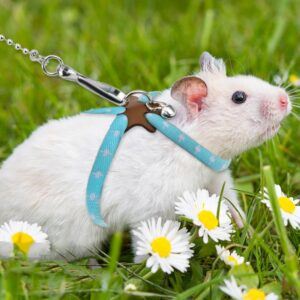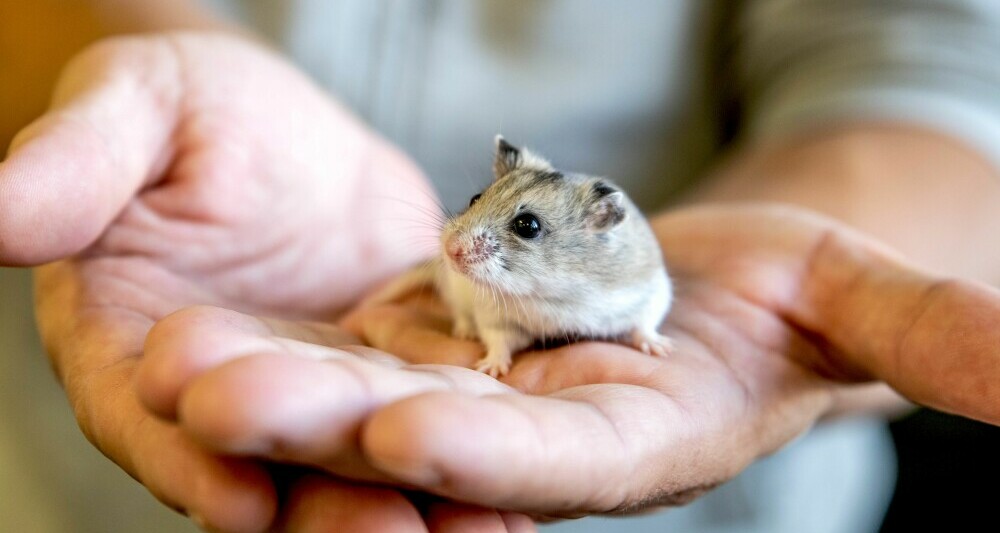I’m here to help you understand the little quirks and behaviors that are signature to your furry friend: the hamster. But why should you care? Well, understanding your hamster isn’t just about knowing when it’s playtime or snack time; it forms the entire foundation of effective training and a joyful life for your tiny companion.
You’re going to find out about the importance of recognizing natural hamster behaviors and instincts. These can include anything from burrowing to hoarding food. By acknowledging these innate habits, you create a baseline for training that’s in harmony with your hamster’s true nature, avoiding unnecessary stress.
Keep in mind that the cage is your hamster’s kingdom. Providing an ample, comfy space isn’t just a nice gesture, it’s critical for their well-being. Space gives them room to explore, exercise, and retreat—vital aspects of a happy hamster life that can drastically affect their responsiveness to training.
And let’s not forget about those hamster-sized jazz sessions at night! These little ones are nocturnal, meaning they’re most active when the moon makes its appearance. So for effective training sessions, remember to work around their wakeful hours. Doing so respects their biological clock and primes them for learning when they’re most energetic.
Ultimately, the calm and secure environment you craft becomes the stage where trust flourishes and training evolves into a bonding activity. As we move into the nuts and bolts of training in the next section, keep these insights in mind. They’ll be the compass guiding your journey to a heartwarming bond with your hamster.
Foundations of Hamster Training
You’ve got to start somewhere, and with hamster training, the basics are your stepping stones to success. Think of it as building the first layer of trust between you and your little buddy. What does this entail? Well, you’re going to kick things off with straightforward commands like ‘come’ and ‘stay’, using tiny treats that your hamster can’t resist.
But here’s the thing: hamsters aren’t mind-readers, and they’re certainly new to this whole training concept. I’m talking about the need for patience and consistency. You’re going to find out that hamsters have their own pace, and respecting that is key. Repeat the training exercises regularly and you’ll gradually see results. Just don’t focus too much on perfection; it’s the effort and interaction that count most.
Clicker training for hamsters is something that might catch your interest. It’s about using a small, handheld device that makes a clicking sound to signal to your hamster that they’ve done something right. Follow up that click with a treat, and bam, you’re on your way to reinforcing positive behavior. This method is often quick and effective, bringing a sense of fun for both you and your hamster.
Now, if you’re aiming to teach your hamster tricks like spinning or jumping through hoops, it’s about breaking down the trick into small, manageable steps. Start with the basics of the trick, and gently guide your hamster through each phase, rewarding success along the way. In my opinion, the ultimate goal isn’t just to have a hamster that performs tricks but to nurture a happy and trusting relationship with your furry friend.
Deepening the Bond: Safe Handling and Socialization Techniques
If you want to enhance the connection with your furry companion, incorporating safe handling and socialization techniques is a must. Let’s talk about how daily quality time can make a real difference. Just like humans, hamsters appreciate regular interaction. By spending time every day with your pet, they’ll start to recognize and trust you.
Gentle handling is another cornerstone of bonding. When you pick up your hamster, do so with soft hands and let them know they’re safe. Speak in soothing tones to reassure them. It shows that you’re a friend, not a threat. And remember, some hamsters may take more time than others to get used to handling, so let them set the pace.
Of course, treats are an ace up your sleeve. Offering a nibble of something tasty can turn a routine handling session into a moment of joy for your hamster. This positive association cements your bond and makes future interactions something they look forward to.
The journey of bonding is personal and can vary from one hamster to another. Pay attention to how your hamster reacts to different handling techniques, and adjust your approach as needed. Some may prefer to be scooped up, while others might like a more gradual approach with minimal direct contact initially.
With consistent practice, patients, and a caring touch, you’ll find your bond with your hamster becoming stronger each day. It’s important to note that stress can hinder this process, so always be mindful of your hamster’s body language and discontinue handling if they seem uncomfortable.

Sealing the Bond: Embracing Patience in Hamster Training
Training your hamster is more than just a series of commands and treats. It’s an exercise in building a trusting and loving relationship, one that needs time and patience to flourish. Remember, each hamster is an individual with its own personality and pace of learning. So while one might spin on command within a few days, another may take weeks to warm up to even the simplest trick.
Positive reinforcement is not only about occasional treats; it’s about creating a consistent routine that your hamster can rely on. This consistency builds a sense of security and trust that goes a long way in training. Don’t worry too much if progress seems slow at times. Your hamster may just need a bit more encouragement or time to adjust to the training regime.
I really hope that you see the joy in this process as much as the outcome. Cherish the little victories, like the first successful command or the first time your hamster confidently steps into your hand. These moments mark the milestones of a deepening bond and are worth more than a perfectly trained hamster.
In conclusion, training your hamster to follow commands, use a wheel, or even do tricks is a fantastic way to engage with your furry friend. Be guided by your hamster’s comfort and well-being, and choose methods that resonate with you both. Enjoy the journey, and before long, you’ll find that you have not just a trained hamster, but also a new little buddy.



2 replies on “Bonding With Your Hamster Through Training”
Hi there
I absolutely love the emphasis on bonding and training with hamsters in the article! It’s heartwarming to see such dedication to strengthening the relationship between humans and these adorable pets.
The detailed tips provided offer valuable insights into understanding hamster behavior and creating meaningful interactions. I particularly appreciate the focus on patience and positive reinforcement, which are key elements in any successful training regimen.
Have you tried any of these techniques with your own hamster, and if so, what was your experience like?
Hey Troy,
Thank you so much for your kind words! I’m thrilled to hear that you found the article helpful and that the emphasis on bonding and training resonated with you. It’s always rewarding to see people dedicated to creating strong, positive relationships with their pet hamsters.
Yes, I have tried many of these techniques with my own hamsters, and the experiences have been incredibly rewarding. Patience and positive reinforcement are indeed crucial, and I’ve found that each hamster, with their unique personality, responds differently to various training methods.
For example, with one of my hamsters, Crumble I started with simple hand-taming exercises, always using treats as a reward. Initially, Crumble was quite shy, but with consistent, gentle handling and plenty of treats, he gradually became more comfortable and would climb onto my hand willingly.
Another hamster, Pebbles, was more adventurous from the start but had a shorter attention span. With Pebbles, I used interactive toys and short, frequent training sessions to keep her engaged. Over time, she learned to respond to her name and even performed basic tricks like standing on command.
Overall, the key is to observe and understand your hamster’s behavior, be patient, and make the training sessions enjoyable for both you and your pet. Each small success is a step toward building a trusting and loving relationship.
I’m always happy to share more specific experiences or tips if you have any particular questions or challenges with your hamster.